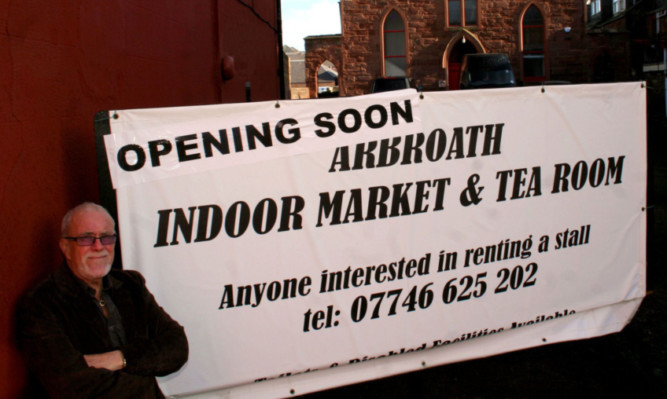A 19th century church has been transformed into an indoor market.
The former St Ninian’s United Free Church building on Arbroath High Street was purchased by local businessman Brian Toner.
Planning approval was gained to change the use on behalf of the Voigt Partnership. When it opens at the end of the month, there will be around 20 market stalls and a cafe.
Mr Toner told The Courier he hopes the community will get behind the venture.
“I put in an offer over a year ago after coming up with the idea of an indoor market,” he said.
“At the time it wasn’t accepted because another deal had been agreed, but when that fell through I decided to try again.
“So many people have told me that Arbroath needs an indoor market like this and I hope everyone gets behind it.
“We will initially be opening on Friday, Saturday and Sunday, but if the demand is there we would consider eventually opening daily.”
Mr Toner said he hopes to recreate the spirit of the Arbroath indoor market of bygone days with the new venture.
“It’s a nice big hall and we’ve also got a really big car park I’m convinced this can be a success,” he added.
“It will be a chance for people to pick up a bargain and we’ve had inquiries about stalls from across Angus already.”
The original church was built around 1806 as St Mary’s Episcopal Church.
The congregation moved to a new building, also called St Mary’s, at Ponderlaw in 1854 and the original 1806 building was sold to the Free Church congregation breakaway from Maule Street Secession Church.
It was later demolished and the present building was constructed on the same site. It was known as High Street Free Church until union with the United Presbyterian Church in around 1900.
The congregation united again in 1924 with East Church and became St Ninian’s United Free Church.
